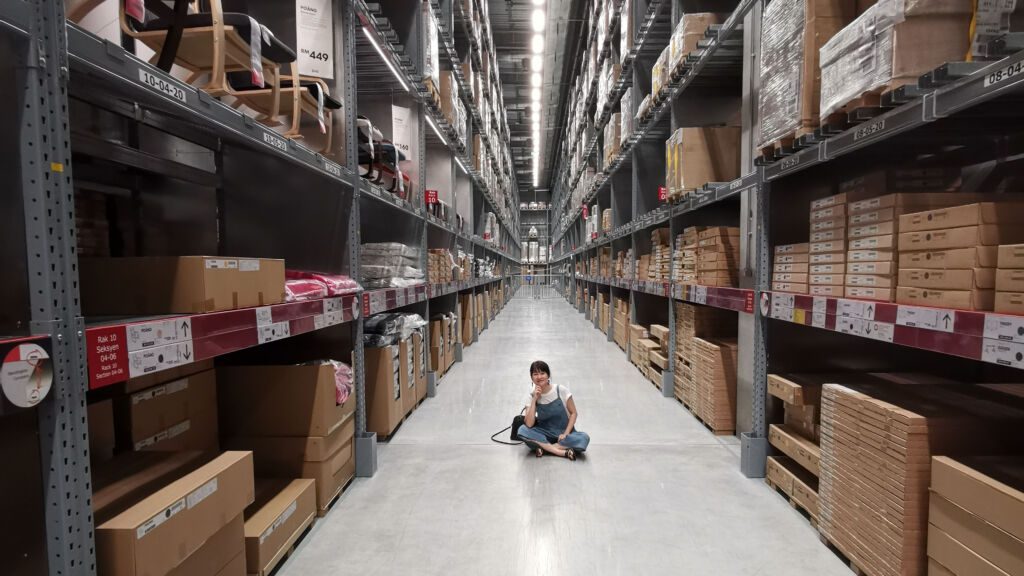
Introduction: Why Inventory Balancing?
Inventory balancing (also called inventory rebalancing), the periodic transfer of inventory from supply chain locations with too much inventory to locations with too little, is an underutilized supply chain tactic. In an ideal world, where demand is reasonably predictable and supply is reliable, we wouldn’t need to adjust inventory levels across our supply networks. Tweaks to the regular flow of inventory from plants to DCs to final customers would smooth out any small deviations from plan. But too often inventories get significantly out of whack because of unexpected shifts in demand, delays in production and delivery, and other supply chain hiccups. In such cases, inventory balancing is often the best option. And in the case of shipments from overseas, where you typically receive a single shipment to just one of your DCs, balancing inventory across your network is a practical necessity.
Three Options When Faced with an Imbalance of Inventory
When faced with an unbalanced network, organizations have three options:
- Do nothing and leave inventory as is. If a location is low on stock, you will incur poor service levels or will need to ship from a more distant inventory location at a much higher cost. Locations experiencing oversupply will incur high inventory holding costs until the excess inventory is consumed or disposed of.
- Produce or purchase more inventory to bring undersupply locations up to target stock levels. This will incur increased inventory holding costs and purchasing costs. If a product is in short supply, you may need to pay expediting fees to suppliers.
- Inventory balancing. By shipping from locations with too much inventory (oversupply, or source locations) to locations with too little inventory (undersupply, or destination locations), companies can deliver better service levels from destination locations without increasing overall inventory holding costs and purchasing costs. They can also reduce product aging and free up space that may be needed for other products. The downside is transshipping costs – the cost of picking, shipping, and receiving goods internally.
The third option, inventory balancing, is often neglected, because it represents going beyond the default options of doing nothing or continuing to purchase or produce more inventory. Supply managers are often hesitant to incur transshipping costs because of a perceived difficulty of identifying and quantifying inventory balancing opportunities. But modern supply chain analysis techniques can quickly quantify the tradeoffs and make accurate and profitable recommendations, integrated into a company’s inventory planning processes. As a result, more and more companies, including manufacturers, retailers, and wholesalers, are realizing that the benefits of inventory balancing often outweigh the costs of transshipping.
A couple examples below give a more tangible feel for what’s at stake and the potential benefits.
MIT Study at Boston Scientific
In a 2022 research project at MIT, Himanshu Halbe and Jinwoo Je worked with Boston Scientific, the $12B medical devices manufacturer, to evaluate the potential benefits of inventory balancing for finished goods. Boston Scientific’s supply chain consisted of 11 plants, 7 sterilization facilities, 7 tier-1 DCs, and 22 tier-2 DCs, holding a total of $728M of finished goods inventory. At the time of the study, Boston Scientific had a hierarchical supply chain, meaning that product would flow from plant to sterilization facility to tier-1 DC to tier-2 DC. The company had no ability to make lateral transfers across the network.
The study focused on the potential benefits of making lateral shipments among supply chain nodes at the same level of hierarchy, e.g., tier-1 DC to tier-1 DC, tier-2 DC to tier-2 DC, etc. The research team determined that 36% of supply chain nodes in the Boston Scientific network had excess inventory, leading to high levels of waste because of product expiration. Nine percent of nodes had inadequate inventory, leading to lost sales, excessive backorder processing costs, and order expediting costs.
“… lateral transshipment reduces 10% to 25% of total inventory cost while maintaining a superior inventory position compared to the current inventory model under varying demand.”
By modeling Boston Scientific’s network under different demand conditions and proposing optimal transshipments, the research team concluded that “… lateral transshipment reduces 10% to 25% of total inventory cost while maintaining a superior inventory position compared to the current inventory model under varying demand.” They also found that to make inventory balancing a practical reality, it should be done as part of the same periodic inventory review process used for replenishment planning and using the same enterprise systems.
Georgia Tech Study at Dell
In a 2020 research project at Georgia Tech, a team consisting of Madison Astling, Lauren Bauer, Colleen Cabugason, Ansley Dykes, Kevin Henderson, Lauren Johnson, and Shanice Pride worked with Dell to evaluate the potential benefits of inventory balancing for electronic components used for manufacturing computer hardware. The analysis compared transshipping components internally with purchasing them from external suppliers. At Dell, purchases from suppliers were typically faster but more expensive because of expediting fees, common in the high tech industry, where components are often in short supply. In the year prior to the study, Dell resolved parts shortages by expediting supplier purchases 49% of the time.
The research team provided Dell with a software tool to evaluate inventory balancing opportunities and validate a new approach. This provided supply managers a quantitative basis for making inventory decisions with more confidence. The study determined that expediting new orders from suppliers had cost Dell $150M in 2020. Thus by balancing inventory instead of making new purchases, Dell could save $1.5M for each 1% reduction in the volume of expedited orders.
The team also looked at the potential to improve the analysis process. The analysis required to evaluate whether to purchase components or balance inventory are often manual, based on intuition, and error-prone. The study determined that Dell’s supply managers spent 20% of their time dealing with supply shortages, or 400 hours per year per person. By automating the evaluation of inventory balancing opportunities, Dell would be able to improve productivity. A 25% reduction in time spent on this activity would yield a savings of 100 hours per year per person.
Practical Considerations
Deciding if and how to balance inventory is a bit more complicated that it may first appear. The core of the problem is to tradeoff the benefits of better service levels at undersupply locations plus the cost savings from reduced inventory at oversupply locations, with incremental transshipping costs. But there are a number of other considerations. For products with expiration dates, your calculations should incorporate the resulting reduction in waste. And in executing transshipments, you will want to consider expiration dates in deciding which cases to ship to which locations. For products for which it is much more efficient to ship in full truckloads, you may want to establish a minimum shipping quantity accordingly. There are other such considerations and constraints for specific industries.
A more subtle consideration is taking into account the timing for inventory balancing transactions. First you need to determine how often to balance inventory, for example, every 2 weeks. Then, you need to come up with a time-phased transshipping plan so that you don’t transship too much upfront and risk incurring the double cost of round-trips – that is, shipping excess inventory to a destination, only to have it shipped back to the source at a future date. You also need to track the time-phased transshipment plan so that you reduce purchasing at destination locations accordingly.
Finally, as the MIT / Boston Scientific team pointed out, inventory balancing should not be an isolated activity but rather should be integrated into the regular supply planning process and systems. This is so your inventory balancing process is leveraging the same data and has visibility to the normal inventory replenishment flow. It will also benefit from leveraging the same process management overhead.
Conclusion
In the past, inventory balancing was an underutilized tactic, as companies would often just increase production or make additional purchases to replenish their undersupply locations. But when integrated into your normal supply planning processes and systems, it can be a powerful tool for lowering inventory costs and improving service levels and revenues.
To Learn More
To learn more about New Horizon products that offer inventory balancing functionality, see Supply Planning and Replenishment Planning.


